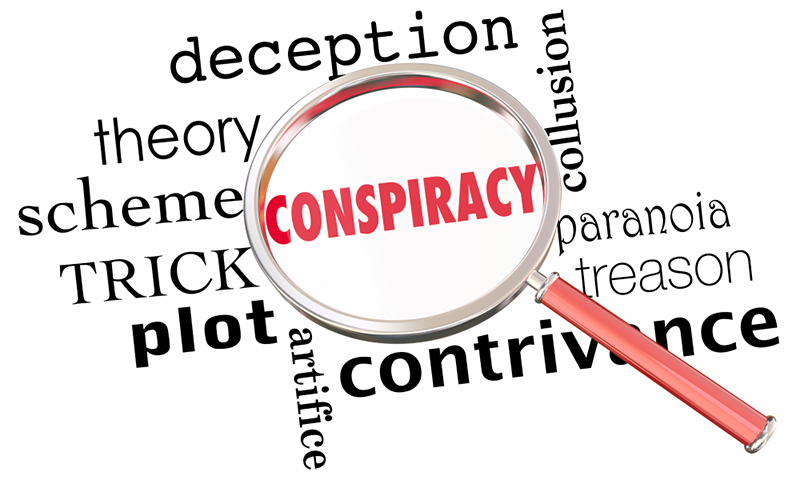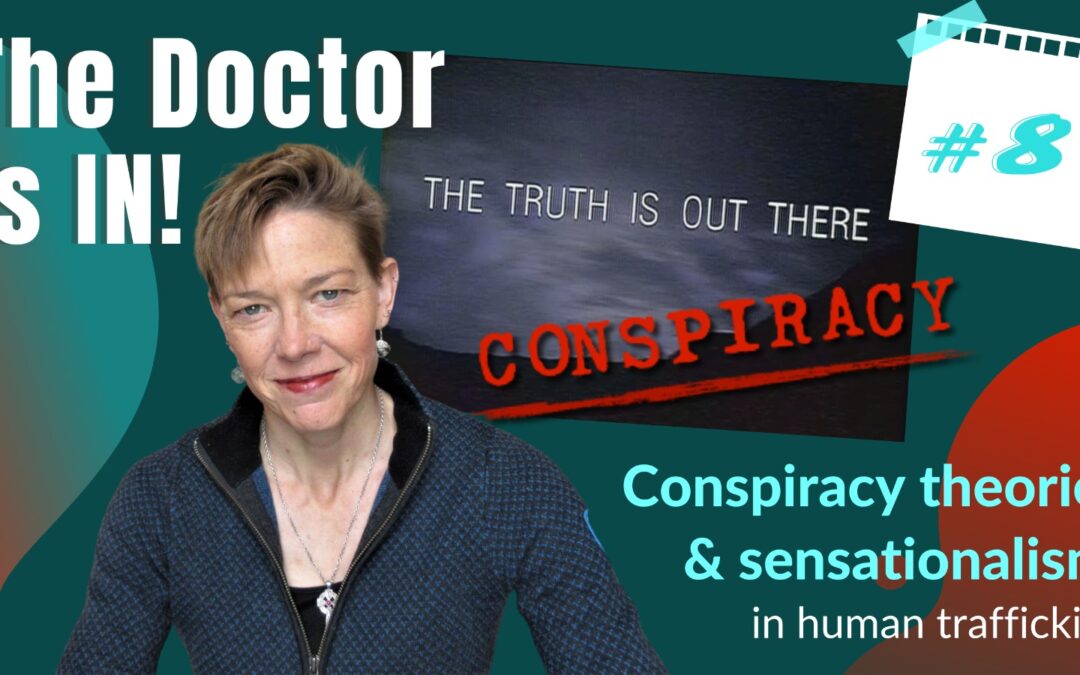
Given the emotionally charged and underground nature of this crime, human trafficking is susceptible to both sensationalism and conspiracy talk. The recent developments of the QAnon conspiracy affair in which it used networks of the anti-trafficking movement to further its agenda prompted me to learn more about it and to help educate you about what happened, why, and what you can do about these kinds of issues. Please view the corresponding video on my YouTube channel.
Normally, most us in anti-trafficking work ignore these sensationalist trends because they usually die down and we don’t have time to pay attention to or want to give oxygen to these ideas. However, this time the misinformation was so widespread and damaging that it became necessary to start dealing with it seriously and proactively addressing it. The Box of Pandora is already open so let’s shine some light and see what we find in there.
What is QAnon?
It is a conspiracy movement that claims, among other things, that (according to Wikipedia) a “cabal of Satan-worshipping pedophiles is running a global child sex-trafficking ring and plotting against President Donald Trump.”. It weaponizes information to sow civil discord. The relevance to human trafficking is that QAnon coopted the hashtag #savethechildren, for their social and political gain to put this topic in the headlines and get followers wittingly or unwittingly to advance their cause.
What happened?
QAnon urged its followers to use the hashtags #savethechildren or #saveourchildren and post messages about the so-called pedophile ring involving many high-ranking politicians (mostly Democratic), Hollywood stars, and other celebrities and about how they traffic children and harvest their blood for “life-enhancing adrenochrome” and about how President Trump is the savior of these children. They also urged supporters to report incidences of child trafficking based on incorrect indicators, which flooded the National Human Trafficking Hotline. The first incident happened in 2018, but the trend grew exponentially through another wave in 2020.
Another conspiracy theory arose, and I’m unsure if this is related to QAnon or not, in which people started posting messages accusing Wayfair, a furniture company, of trafficking children through transporting them in wardrobes and cabinets.
Conspiracies
Conspiracy stories grow from a kernel of truth into something that is sensationally false.
This so-called “save the children” campaign took what is a real and terrifying problem and turned it into a political and social campaign to steer people towards a particular political ideology, coopting a noble cause and hashtags for dubious gains.

Sensationalism Conspiracy theories and sensationalism go together. Sensationalism isn’t a new strategy. Food and diet and health industry commercial leaders love to throw around a bunch of garbage as clickbait to get you to fall for the latest fad. Sensationalism often takes advantage of a “Rescue” mindset. Rescue is a trigger word and implies weak people being saved by strong heroes. Rescue is doing something FOR someone, not WITH someone. Organizations who continually use tropes of filthy and pathetic looking women and children behind bars makes for great media publicity and donor dollars but does not actually represent the truth and dehumanizes victims and survivors for the benefit of the organization.
Sensationalism does not help raise awareness – it raises attention and a lot of false information. But like I said, human trafficking engenders strong emotions and we want to feel like we are doing something about it. But often these types of campaigns have very little impact.
What is true.
• Ritual Abuse is carried out by satanic and other cults.
• Some people with great wealth and power exploit other people.
• There are networks of pedophiles that who produce, sell, and buy child pornography and participate in the abuse of children.
• Children are being recruited and sold online at alarming rates.
• Human trafficking, child trafficking and sexual exploitation of children are serious and diabolical crimes and we need to be doing everything we can to stop it.
• International networks, some of which involve corrupt government officials, traffic people internationally.
• There is an actual Save The Children organization that has nothing to do with the ensuing bru-ha-ha and they have clearly separated themselves from it.
• Congress passed a bipartisan resolution condemning the conspiracy theory QAnon movement
• The Wayfair conspiracy has been thoroughly debunked.
So, what? People post these hashtags on social media and want to have a demonstration or do something. Isn’t raising the general awareness about child trafficking and abuse a good thing? What’s wrong with that? My opinion is that most of the people sharing the save the children hashtag and promoting anti-child trafficking in these threads are NOT QAnon conspirators. Probably most are caught up in the compelling headlines, memes and heart-wrenching stories about children being grotesquely harmed. Then ignorantly shared and promoted these hashtags and memes. Unfortunately, there is a lot more harm being done than we realize. Please read this open letter from various NGOs to politicians, media entities and policy makers about the harm caused by this and other conspiracy theories.
The Harm
• National hotlines have been flooded with misinformation and reports.
• The hotlines are required to refer these reports to law enforcement agencies who are in turn required follow up on them
• The thousands of false reports dilute law enforcement time and capacity to identify and work on legitimate cases of missing and exploited youth
• People with legitimate concerns have had to wait long periods of time or have not been able to get through.
• Diverts time and energy away from the real work against trafficking and child exploitation
• Prevents parents from protecting children from the risks that are more likely and closer to home, if not IN your home. When parents believe trafficking to be something sensational and external, as in the movie Taken, they are not paying attention to the everyday risks and predatory tactics such as online grooming for sexual exploitation.
• These campaigns don’t move us forward against trafficking or do much to help children. They create more confusion about what the truth about human trafficking is and what can be done about it.
Why and how could this happen?
The atmosphere in the States (and many places elsewhere) is very politically charged and trust in government is very low. Many people are at home spending exponentially large amount of time online and on social media. We are isolated, which means we are gathering less to discuss these issues. Furthermore we are enduring a lot more mental health stress. The media is slanted, and people doubt the veracity of a lot of the media – even on very important and crucial topics.
Conspiracies thrive in this environment, which is stoked by fear: Trafficking. Virus. Pandemic. Isolation. Death. Uncertain future. Conspiracies attract people by tapping into their distrust and fear through sensationalist media techniques.
How to educate yourself and do due diligence
What are the tools we need to sort through the rubbish that is thrown about in the name of anti-human trafficking work or other noble causes? How do we fight misinformation and refuse to pass it on?
• When a report says, “experts say” or “studies say” but provide no reference or link, then it might not be factual information Avoid these traps. Look for primary source data.
• If there isn’t a source given for the statistic or claim, then discount it
• When links are provided, follow them up. Check those links and read the papers. If the link refers to a media article (say, a local news bulletin) which then cites another news bulletin, which got it from some other secondary source, which had originally mis-represented the information discussed in a research study, it’s garbage.
• Stay informed on the topic in general by regularly gathering information from reputable sources.
• Know reputable sources. Ask your local anti-trafficking network or an organization you support for the resources they go to for their information.
• Learn how to read studies
• Statistics are manipulated, sometimes for sensationalist attention. When a number seems high or is repeated in a way that begets misinterpretation
• Statistics are also subject to the phenomenon of the media “telephone game”, in which the numbers lose all original meaning.
Questions to ask yourself and others
• Is it bringing hope or hype?
• Is what’s being promoted truly an anti-trafficking campaign or is it a campaign to promote the organization doing the campaigning?
• Are there practical steps to action or is it only social media and hashtag activism?
• Is the article conflating smuggling, domestic abuse, child abuse, and human trafficking? All of these are heinous crimes, but they are not the same thing. To confuse them does not help any of these problems – it only confuses the issues in the minds of the public which makes it easier for organizations to take advantage of the misinformation.
• What is the underlying goal of this story or awareness campaign? Is it to get you to donate money to an org for “work” or other vague purpose that they can’t demonstrate?
• Are the people promoting this campaign lifestyle influencers on Instagram? If so, are they referencing reputable sources? Or are these sensationalist memes generating from an echo-chamber of hype geared towards likes, clicks, and followers?
• Is the campaign tied to something political or is the organization behind it linked some other political or social agenda other than stopping the crime?
• Are these campaigners asking you to join a private group on Facebook or other platform through which they create an echo chamber designed to get you to believe other things?
Other things you can do
• Know the situation in your local area. It is way more effective to help reduce vulnerabilities for being trafficked than to protest for something happening on the other side of the planet.
• Reduce your kids’ exposure to online exploitation and make sure they tell you if they encounter it. There is no IF, only when.
• Demand more safety mechanisms for kids online
• Demand more from social media tech giants to stop the spread of child porn and identify perpetrators
• Tutor at-risk kids to help keep them in school
• Advocate for access to childcare to help support working single parents with small children
• Become a foster parent and work towards reducing institutionalization of children.
• Improving access to mental health treatment
• Pay attention to where your food (such as chocolate, tea, tomatoes) or your clothes come from and commit to buying more ethically and letting your favorite brand know that this is important.
• See my prevention blog for more information
There is a lot more to be said and done about this topic – it is huge and will continue to grow – but there are ways to stop it. This is a basic yet helpful overview of the problem and what I think is most important is to give people tools to stop misinformation and do something positive to stop trafficking and abuse.
Please share this blog and the YouTube video! I present a webinar with live Q&A every other week and I look forward interacting with you on the next one!



Recent Comments